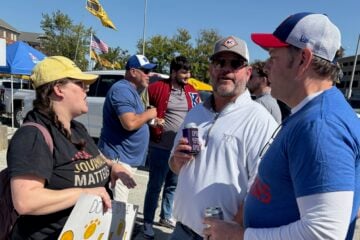The power of partnerships, promotion and pledge to drive revenue

Kunakorn Rassadornyindee / iStock
Radio is an intimate medium. As listeners, we’ve always known that. And if we work in radio or podcasting, we know that personal connection is everything.
The way we make connections that lead to support is just as important as the way we connect through great content. Maybe even more, because money is a delicate subject in most relationships.
First, the basics: How effectively is your station using your airtime to promote mechanisms that lead to financial support? Are you repeatedly giving donors credit for helping bring your programs to the community? Do corporate underwriters feel appreciated? Is any of your interstitial inventory going unused? Is pledge considered a necessary evil, or an opportunity to build community and tell your story?
We know from both underwriter and member feedback the power of gratitude. There are countless examples from both public media and from the more traditional nonprofit sector that people as well as organizations decrease or even stop providing support when they don’t feel appreciated or acknowledged for their efforts. That being said, there is great opportunity to leverage station resources to both recognize and grow sponsor/member engagement.
For example, use your on-air inventory to build understanding of donor-station or corporate sponsor–station relationships through social science principles. Peripheral persuasion involves exposing audiences to ideas over time in a way that aligns with their beliefs. We can also refer to these as image, branding or audience development campaigns.
Taking the peripheral route helps decision-makers grasp value propositions and develop attitudes about your station that allow them to make decisions “in the moment” to support you, such as during a pledge drive. This also goes hand in hand with the public media “halo effect” as listeners make decisions about organizations they choose to patronize due to an organization’s support of public media.
People use these types of mental shortcuts every day to take actions that advertisers and other persuaders want them to take. And because retention of a given message fades over time, frequency reinforces the ideas we want our audiences to retain. For existing members and underwriters, these messages reinforce and in some cases prompt an interest in enhancing support. Imagine the combined power of a corporate underwriting proposal and on-air testimonials from other community leaders lauding the impact of your station on their business growth and on public service.
Off air, you may also employ the central route to persuasion, a more data-driven, proof of impact–oriented communication that will stick with the listener longer than those peripheral messages. For example, a major donor may use central route arguments when deciding to give during a drive or outside of a campaign. An underwriter or foundation may take this route when deciding whether to devote some of their marketing or community engagement spend on public media. When used together, these communication techniques will create a more direct route to decisions when a call to action is made.
Three actions you can take now:
- Record testimonials from current underwriters who’ve had a fruitful relationship with the audience through the station about how they feel their partnership positively impacts the community (they/we) serve.
- Create consistency in theme and messaging efforts between membership and underwriting. For example, if your station has a themed membership drive, work with underwriting to carry that same theme through in underwriting proposals and presentations during the drive. Also, in some cases, pledge arguments translate well into underwriting narratives, and vice versa. Schedule a quarterly meeting between membership and underwriting to share messages that are resonating with new members and sponsors.
- If your station is part of a journalism collaborative (with multiplatform statewide or regional partners) make that fact known to your listeners and underwriters in a prominent fashion. Talk about it during pledge drives, in digital spaces and in “proof of performance” on-air spots. Music stations involved in partnerships should also make clear that the listeners and sponsors help make the station an inextricable pillar of the arts and music scene. The arts have a vital megaphone in the form of broadcast and digital platforms when the station is supported wholeheartedly.
Lori Zoss Kraska, CFRE is founder and chief principal of Growth Owl LLC. She’s held key leadership and corporate sponsorship positions within organizations including Ideastream Public Media, DAC Group, Clear Channel, University of Phoenix-Midwest Campuses and Citysearch.com. Lori holds an MBA in systems management and when time allows is an adjunct professor of communications and public relations at Baldwin Wallace University.
Barry Nelson has led fundraising teams at GBH and WQED, and Nelson & Associates clients have included New York Public Radio, Ideastream Public Media, Houston Public Media, Mississippi Public Broadcasting, WQED Multimedia, WVIA Multimedia, WSHU, WVXU/WGUC, WYPR and WAMU. He is also a consultant to the Contributor Development Partnership.






